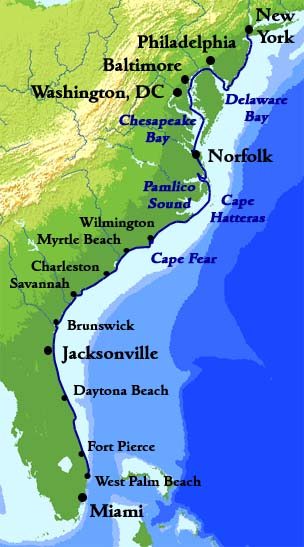The ICW

|
The Intracoastal Waterway
We have had time here in Titusville to learn much more about the ICW. American Waterways care for more than ninety five thousand miles of shoreline and two hundred and ninety thousand square miles of water and approximately seventy million recreational boats in the US. The Intracoastal Waterway is a three thousand mile waterway along the Atlantic and Gulf coasts of the United States. Also fondly referred to as The Ditch.
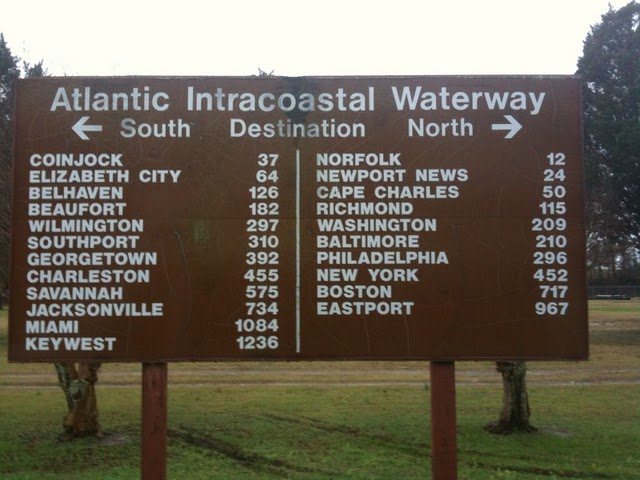
Some lengths consist of natural inlets, salt-water rivers, bays, and sounds; others are man-made canals, sometimes joining two rivers together. It provides a navigable route along its length without many of the hazards of travel on the open sea. The waterway runs for most of the length of the Eastern Seaboard, from its unofficial northern terminus at the Manasquan River in New Jersey, where it connects with the Atlantic Ocean at the Manasquan Inlet, then around the gulf of Mexico to Brownsville, Texas. The waterway is toll-free, but commercial users pay a fuel tax that is used to maintain and improve it. The ICW is a significant portion of the Great Loop, a circumnavigation route encircling the eastern half of the North American continent.
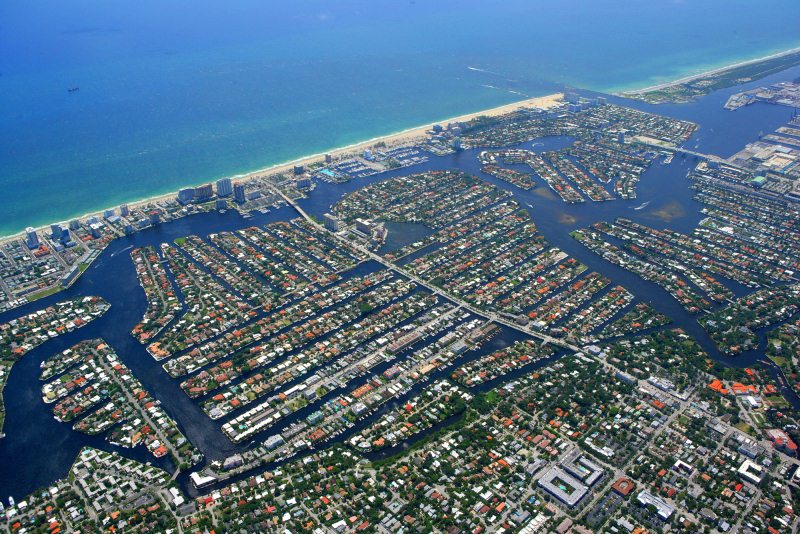 The ICW at Fort Lauderdale
The creation of the Intracoastal Waterway was authorized by the United States Congress in 1919. It is maintained by the United States Army Corps of Engineers. Federal law provides for the waterway to be maintained at a minimum depth of twelve feet for most of its length, but inadequate funding has prevented that. Consequently, shoaling or shallow water are problems along several sections of the waterway; some parts have seven foot and nine foot minimum depths. The waterway consists of three non-contiguous segments: the Gulf Intracoastal Waterway, extending from Brownsville, Texas east to Carrabelle, Florida, the Florida Gulf Intracoastal Waterway beginning at Tarpon Springs, Florida and extending south to Fort Myers, Florida, and the Atlantic Intracoastal Waterway, extending from Key West, Florida to Norfolk, Virginia (milepost 0.0). These segments were originally intended to be connected via a northern Florida dredged waterway from St. Marks to Tarpon Springs and the Cross Florida Barge Canal across northern Florida, but these projects were never completed due to environmental concerns. Additional canals and bays extend a navigable waterway to Boston, Massachusetts.
Galveston Bay
The Intracoastal Waterway has a good deal of commercial activity; barges haul petroleum, petroleum products, foodstuffs, building materials and manufactured goods. It is also used extensively by recreational boaters. On the east coast, some of the traffic in fall and spring is by snowbirds who regularly move south in winter and north in summer. The waterway is also used when the ocean is too rough to travel on. Numerous inlets connect the Atlantic and the Gulf of Mexico with the Intracoastal Waterway.
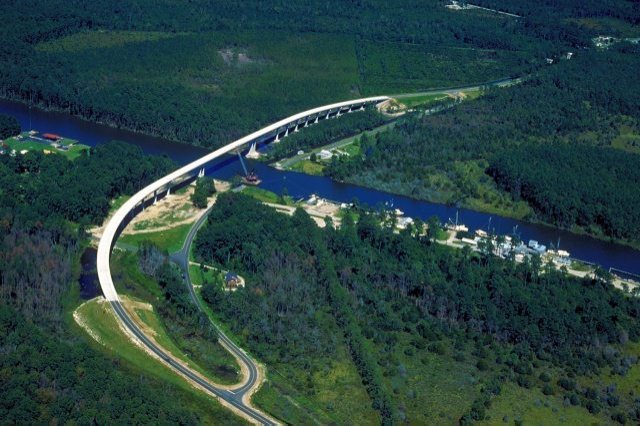 A section of the Intracoastal Waterway in Pamlico County, North Carolina. The Hobucken Bridge crosses the waterway.
Natural bodies of water included in the Intracoastal Waterway system: Albemarle
Sound. Apalachicola
Bay. Barnegat
Bay. Biscayne
Bay. Buzzards
Bay. Cape
Cod Bay. Casco
Bay. Charleston
Harbour. Charlotte
Harbour. Chesapeake
Bay. Delaware
Bay. East
River. Galveston
Bay. Gulf
of Maine. Halifax
River. Laguna
Madre. Mississippi
River. Mississippi
Sound. Mobile
Bay. Mosquito
Lagoon. Pensacola
Bay. Indian
River Lagoon. Long
Island Sound. Pamlico
Sound. Pine
Island Sound. Santa
Rosa Sound. Savannah
River. Sarasota
Bay. Tampa
Bay.
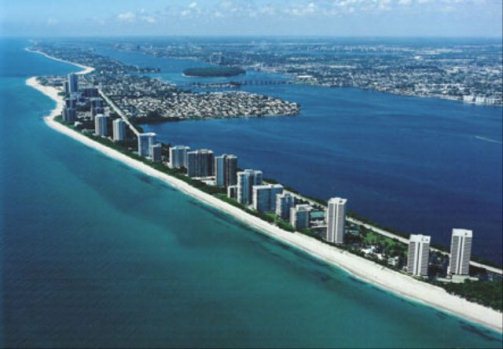 Canals: Major freight canals: Cape
Cod Canal and the Chesapeake
and Delaware Ship Canal. Other canals: Chesapeake
and Albemarle Canal. Dismal
Swamp Canal. Cape
May Canal. Delaware
and Raritan Canal - no longer operational or part of the Intracoastal
Waterway. Okeechobee
Waterway and Point
Pleasant Canal.  The wildlife we have seen so far has been incredible and varied
Between Miami and New York there are seventy three things to try and
see that are featured in the 1000 places to see book. Fifty en route and twenty
three in New York, we are going to try and do as many as is possible in the time
we have, staying on the ICW as much as we can. Many have said it is a good
thing to hop out to do some serious miles at sea using the Gulf Stream to
push you along. We can keep that as a fall back
option, but for now plan to motor along the
Ditch. ALL IN ALL A VERY UNIQUE MUST DO ONCE
|
